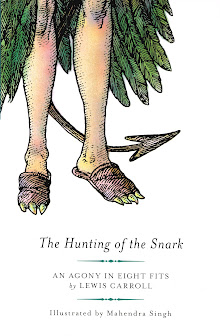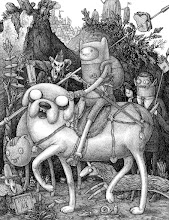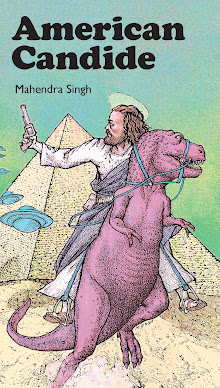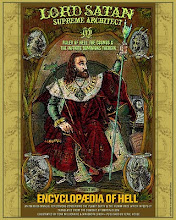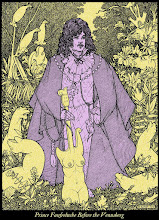
He had forty-two boxes, all carefully packed,
With his name painted clearly on each:
But, since he omitted to mention the fact,
They were all left behind on the beach.
The loss of his clothes hardly mattered, because
He had seven coats on when he came,
With three pairs of boots — but the worst of it was,
He had wholly forgotten his name.
The subject for today's sermon is the number 42, personified by the late, great Douglas Adams (pictured above at his easel). The late Mr. Adams has been dragooned by this artist into performing what is essentially a Magrittian pratfall involving bits of canvas, packing crates and some pokey things. He is ably assisted by the charming Xie, AKA Alexandra Kitchin, a young Englishwoman clad in a Chinese costume delineated by the very best India ink, the entire ensemble having once furnished the subject of a photograph by Lewis Carroll.
This artist has not felt it necessary to depict the seven coats and six boots mentioned in the above stanzas, owing to the fact that since the clothes make the man, the commutative principle of haute couture allows the man to make the clothes. Therefore, the sartorial and ontological nudity of this man (still un-named, un-manned and un-drawn) is his own lookout. No doubt, if left alone, nature will have its way and his coats and boots would multiply and eventually replenish his wardrobe (the commutative spirit of Victorian men's fashion was biblically fecund) and he will find himself the proud possessor of 42 coots and boats.
With these newfound portmanteaux in hand, we see our anonymous semi-protagonist depicted evacuating this barren strand for the ontologically, sartorially and spatially broader comfort of the next stanza, wiser by a factor of 42.





